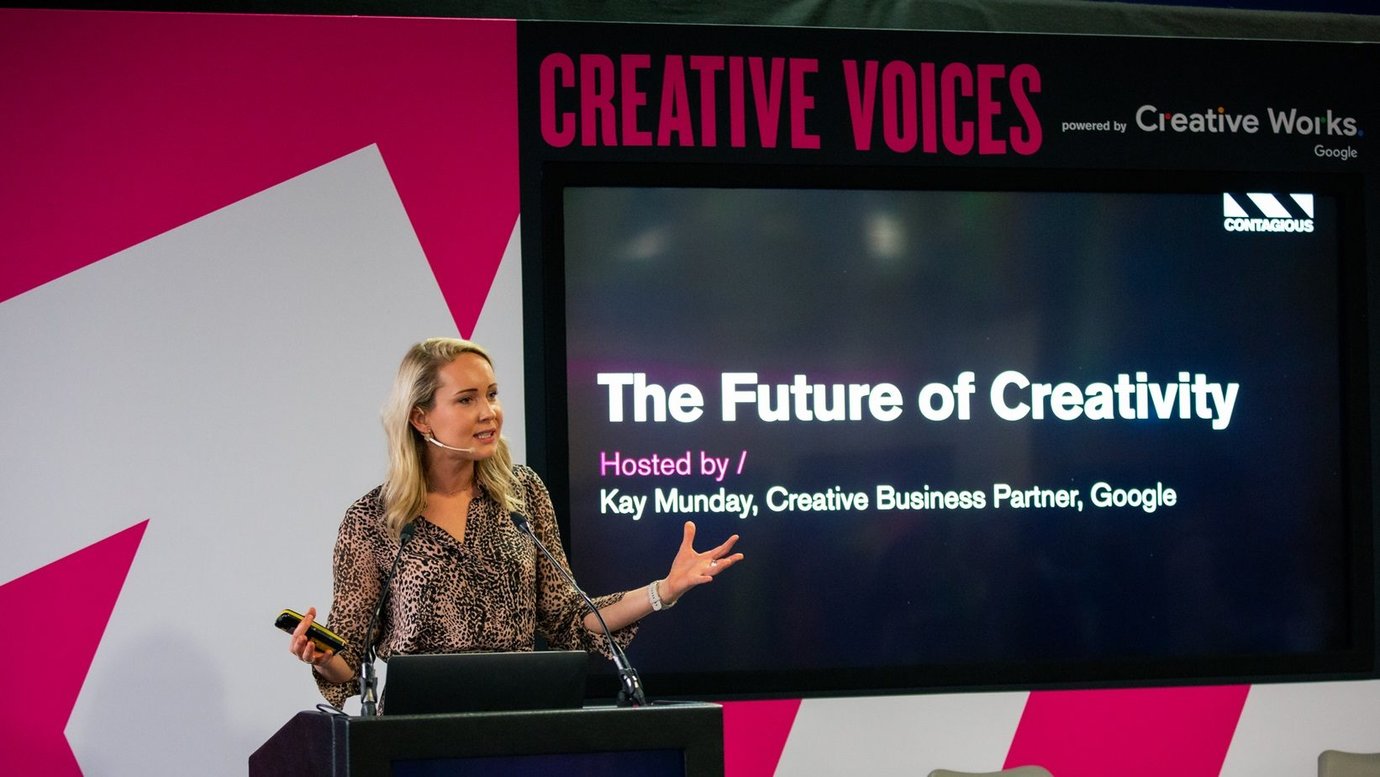Promoted content
From data to creators: the future of creativity / the Open Creative Project /
What are the challenges and opportunities for creatives presented by digital platforms and tools? Marketing experts of varying stripes chewed over the big questions, with a little help from Google, at Most Contagious

Marketing experts debated the future of creativity, data and the creator economy on the Creative Voices stage at Most Contagious on 7 December.
Google Creative Works sponsored the new stage, and curated a programme of lively talks to get to the root of some of the biggest issues facing creative marketers today.Nisha Mathews, a creative strategist at Google, kicked off the first panel discussion. She began by introducing Google’s Open Creative Project, a publication it produced with Contagious, Bain & Co and tech writer Benedict Evans, to help the ad industry understand how technology is transforming creativity.
Focusing on how brands can reach the right people with less data, Mathews put her first question to Luca Corteggiano, McCann’s executive creative director for Europe, asking him about his work on Mastercard’s Where To Settle Campaign and the idea of using data for good.Corteggiano stressed that Mastercard wanted to put data to work in ways that benefited its customers as much as itself. He also said that while a lot of big brands talk about purpose, it was vital for them to pick something that’s ‘part of your DNA’, because seeing the business impact of a purpose campaign ensures that they will commit to it over the long term.
On the question of the challenges and opportunities of using data in a creative way, Google creative technologist Sam Mayo reiterated Google’s mission to organise the world’s information and said one of the biggest hurdles was that ‘there’s exponentially more data being created’, so it becomes a huge challenge ‘to add filters and processes so we can make it comprehensible’.
But, Mayo added: ‘Good useful data drives personalisation, and when you cater yourcommunications to people you know you will get more engagement.’As for how we can ensure data is used the right way, Contagious’ editor Chloe Markowicz borrowed some sage advice on AI from Abba’s Björn Ulvaeus. ‘When it comes to AI,’ Markowicz said, ‘you should be defensive and offensive. You can’t ignore this but also have to be aware of the threats and act responsibly.’
Google creative business partner Jordan Berkowitz hosted the second panel session, on the creator economy. Directing his first question to Firdous El Honsali, the VP of external communications at Dove, Berkowitz asked how working with creators had changed the personal care brand’s perspective on its mission to promote ‘real beauty’.
El Honsali responded that it was a ‘very logical’ move to work with creators because themessage belonged to them as much as it did the brand. She added that Dove’s Cannes Lions Grand Prix-winning #TurnYourBack campaign would ‘never have seen the light of day if it was not for creators’, because they were the ones who started the conversation about the Bold Glamour filter on TikTok.
Marketing professor Marcus Collins then chimed in that creators had changed ‘the modality of how we as marketers communicate’, adding: ‘Before, it was like, “this is our campaign, we want to roll it down the bowling alley and knock over as many pins as possible”. But the Dove campaign is a great example of how (now) it’s more like a pinball machine, where we have a point of view about the world and we’re bobbing it over to other creators to bounce it around and hit more people — not only does that give you greater reach, it gives you greater connection.’
Meanwhile, Bobby Nolla, a creative lead at Google, reiterated the importance of givingcreators the freedom of a tight brief. ‘It’s not about being prescriptive,’ he said. ‘It’s about having a clear brand message and giving the creator the freedom to deliver that message while bringing their own magic.’
Kay Monday, a creative business partner at Google, hosted the final panel discussion, on the new digital age and how creativity is being transformed in this ever-shifting landscape, with new tools, new platforms and new technologies.
Asked about the tension between grabbing attention with new ideas and reaping the benefits of long-term campaigns, Google creative lead Andrew Bent said creatives are always pushing for new things because they want to ‘own that new expression’. But he added that it was important not ‘to throw the baby out with the bathwater’ by switching brand strategies too often.
Balancing those two things means brands can turn up in a fresh way but also keep thefamiliarity of their brand expression, which people can grow to trust and believe.Tati Lindenberg, the marketing VP at Unilever responsible for Persil’s Dirt Is Goodcampaign, which has been running for 20 years, explained how her brand ensures it hits all the levels of the funnel, saying that 20% of its budget goes to purpose-driven campaigns, while 80% is spent on more product-focused activations that incorporate the big ideas.
‘I'll say something maybe controversial,’ she added: ‘The 20% on pure purpose is mucheasier to do. The hard thing is when you need to tell a product story in a way that embeds your belief system.
Bent then added that some of the best advertising that he sees on YouTube now comes from small, D2C brands, who don’t feel constrained by traditional techniques. ‘They basically collapse the funnel into one asset. They don’t have assets that drive salience and other assets that drive performance. They do it all in one go.’
Learn more about the Open Creative Project here.
Want more of the same? /
We don’t just write about best-in-class campaigns, interviews and trends. Our Members also receive access to briefings, online training, webinars, live events and much more.




